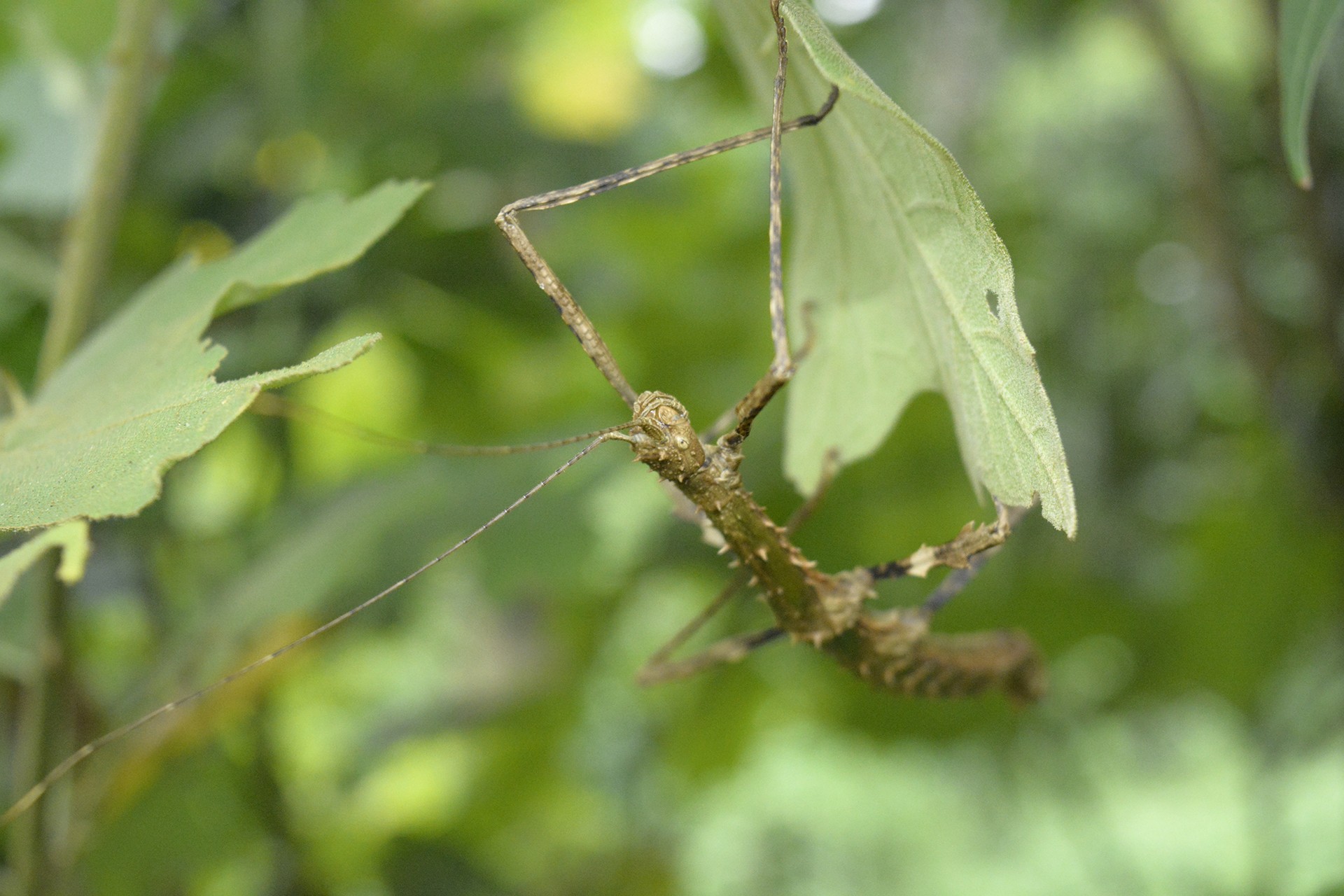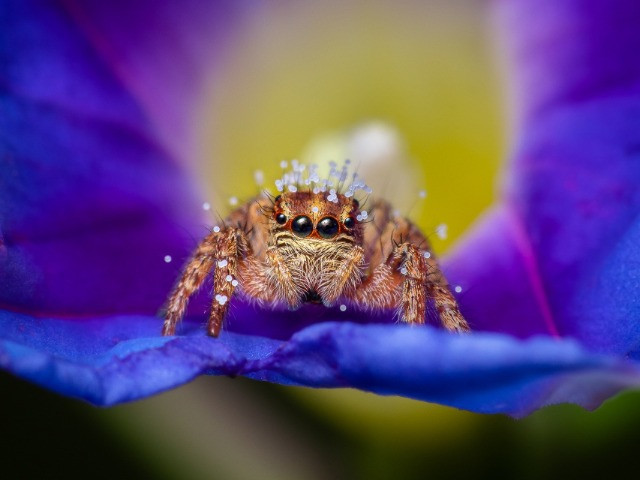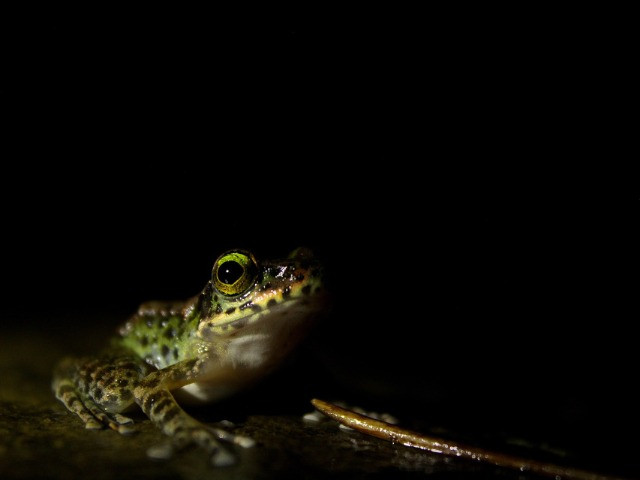This is the first story in a series of articles we are launching to showcase the unseen and often overlooked biodiversity of our forests, as documented by two forest guards in the Pakke Tiger Reserve in western Arunachal Pradesh.
My name is Paro Natung and I have been working with the Forest Department of the Pakke Tiger Reserve since November 2011. I am from Darlong, a village where I get, both, a good view of Pakke’s beautiful landscape and experience firsthand the vicious cycle of wild animals destroying our crops. My father works as a night watchman at the Public Works Department and my mother takes care of our home. I have two brothers who are studying at the government higher secondary school close to our home and my father and I support their education.
One small way to do so was to further my interest in photography. I got intensively trained as a filmmaker at Green Hub, Tezpur along with my friend and colleague Chandan Patro. We made a film ‘Protecting Paradise’ which was screened at multiple places – from schools around the village to the Pakke Paga Festival and then the Nature inFocus Festival in Bangalore. We got some incredible footage of large animals, including the first live video recording of a tiger in Pakke.
In this series, Chandan and I will take you through Pakke's forests and show you what life looks like in macro. There is a lot of un-noticed biodiversity in our tiger reserve, and we have always dreamt of documenting the smaller life in Pakke. We will be focusing on different themes such as insect homes, the macro life around Pakke’s rivers and streams, its butterfly and moth diversity etc.
For our first story, we will take you on a tour of our anti-poaching camp, and hopefully, it will serve as a window into our lives as 'Forest Watchers' of the Special Tiger Protection Force of Pakke.
Robber Fly
Robber flies are predatory flies that eat other insects; they even prey on butterflies. I saw this one at the camp in Sukhanallah 1, inside Pakke Tiger Reserve. Upon first glance, it looked dead almost, so still. On closer observation, I realised that it was in the process of laying eggs – discharging a foamy substance from the tip of its tail. Later I came to know that when the robber fly lays eggs, it covers it with a chalky substance for protection. Oh, and they don't bite humans; I was worried unnecessarily.
Stick Insect
It is a very common sight in our forests, to see birds and lizards feeding on stick insects. But, the stick insects have their own methods of defence – swaying to resemble a moving twig, flashing their brightly coloured wings, playing dead. In fact, they are even capable of growing back a lost limb.
I came across this one too at our anti-poaching camp, when I touched it by mistake while plucking brinjals from the vegetable patch. I enquired with my fellow patrolling colleagues if they knew the name of the species, no one seemed to know, and everyone just started giving it their own names – the brinjal insect (since it was found on a brinjal plant), the 'loha (iron) wala' insect (due to its rust-like appearance) etc.
Elbowed Pierrot
The Elbowed Pierrot butterfly gets its name from the elbow-shaped patterns on its wings. Just across from our camp, there is a salt lick that we call a 'pung' which is regularly visited by Barking Deer, Sambar and elephants. I had gone to dump some salt in the pit when by mistake, I dropped some salt in the nallah (stream) nearby.
Freshly emerged male butterflies usually mud-puddle on moist soil from where they derive the requisite minerals. True to form, on returning, I noticed that there were a number of Elbowed Pierrots coming together beside the stream. I watched them for a while, before heading back to the camp for some more salt.
You may also like to read
Caterpillar of Lesser Death's-head Hawkmoth
After my early morning patrol, I was walking around the camp with a plate of cold boiled rice, when I spotted this bright yellow-coloured caterpillar. Thick-bodied and with a tiny spiny tail, I watched mesmerised, as it lugged itself about using its tiny legs.
I couldn't help but wonder what moth or butterfly would emerge from this beautiful little creature. I later came to know that it was a Lesser Death's-head Hawkmoth caterpillar. Once Hawkmoth caterpillars emerge from their eggs, they eat and eat, becoming bigger in size each time they moult, a process which repeats five times before morphing into a chrysalis (pupa).
By the time my eyes had refocused on the world around me, the camp chickens had eaten my rice and I was left with the unenviable duty of cooking rice and vegetables from scratch.
Bird-dropping Spider
In Pakke, summer and monsoon are the best seasons to go out and watch spiders. When I walk around with my camera, I see so many of them.
Sometimes we encounter big animals or hear loud calls, quite suddenly, which can be scary. This time, it was the alarm call of a Sambar Deer, hearing which I lurched back and that was when I noticed some movement from the corner of my eye. What looked like a bird dropping on a nearby leaf, was moving.
It was a tiny spider which had camouflaged itself really well, to look exactly like bird shit! I wanted to take more photographs but it started to rain.
Lanternfly
Lanternflies are planthoppers that feed primarily on plant sap. I found this well-camouflaged one while resting on the side of a road in Tippi Ghat, the westernmost edge of Pakke. I had never seen a lanternfly before, and neither had my patrolling friend Raju Bodo; we found ourselves excited by the near-headless appearance of the insect.
Intrigued by its long snout, I later found out that many years ago it was believed that the snout emitted light during mating, a fact that not all entomologists agree with. To date, we don’t know what the snout is used for; but it looks like the reason lanternflies got their name was based on a mistake.
Cicada
There is a tree in my camp where cicadas gather, even patrolling teams from other camps comment on the sound levels at our camp. Cicadas can disable their eardrums and don’t have to hear themselves. During the day, their calls are so loud that we are forced to leave our camp and patrol the forest. But once we return from the forest, tired and ready to hit the bed, it is nice to fall asleep to their chorus. I was impressed to know that some scientists in Pakke are able to tell cicada species apart by their calls, just like they do for birds and frogs.
Once we graduated from Green Hub, we no longer had access to camera gear or the necessary equipment to shoot. It was a bunch of researchers (Annesha Chowdhury-Majumdar, Ishika Ramakrishnan, Neyi Jamoh, Nandini Velho), film-makers (Rita Banerji and Ram Alluri) and our Ranger Kime Rambia who came together to help us write and send a proposal to IdeaWild, from whom we received a basic macro lens and camera body to kickstart our work.
For this five-part series, Sanjay Sondhi, who wrote the book 'Butterflies and Moths of Pakke Tiger Reserve' is helping us identify insects, and Nandini Velho is helping us in putting this all together. If any of you are interested in helping us, feel free to join our team in this endeavour.











